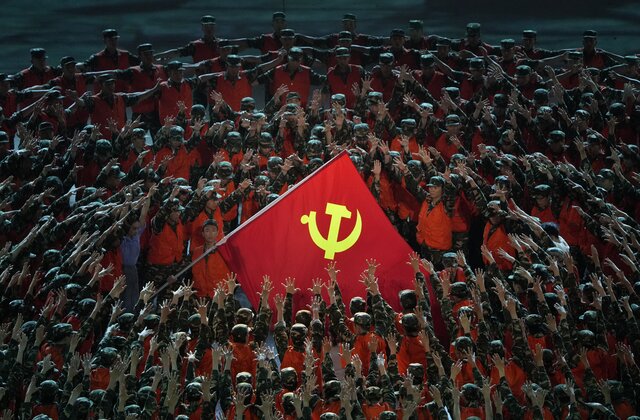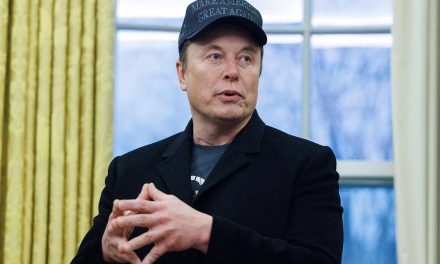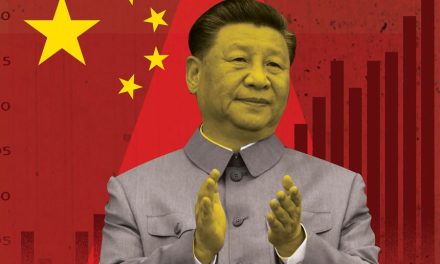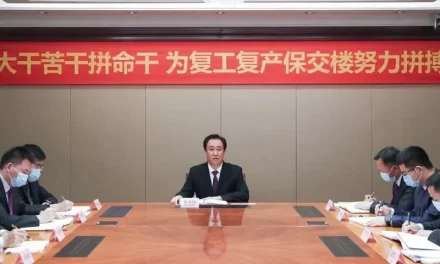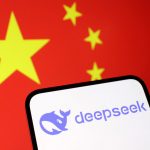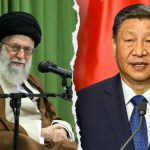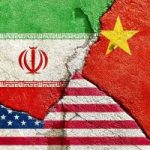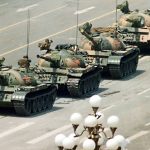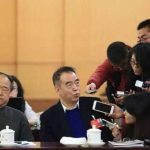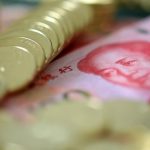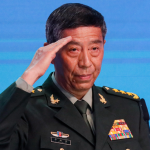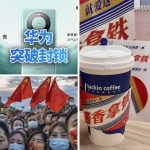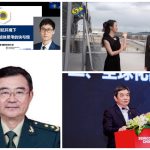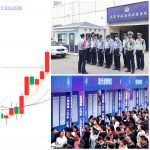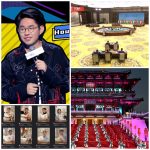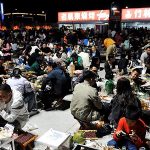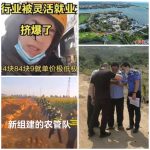A few months ago a Chinese-language article titled “Objectively Assessing Xi Jinping” made the rounds online inside and outside China and generated a great deal of debate. How should we assess the economy under Xi’s leadership? This not only matters in thinking about today’s economy, but matters even more for how his continuation in office will affect the world for the next five years, ten years and even beyond. The editors of Yibao are soliciting commentary on this anonymous article, and we welcome submission of articles from the public.
Today’s article is the first in this series: “How Xi Jinping destroyed China’s economy.” The author’s view does not necessarily represent that of our editorial board.
The author of “Objectively Assessing Xi Jinping” has a clear verdict on his economic record:
“In addition and objectively, with respect to the economy Xi Jinping has been somewhat unlucky, in that he took power at a turning point in the business cycle, as China soon fell into recession.
And in the ten years he has been in power, government debt has increased and and monetary policy has turned quite expansionary, even as the usefulness of fiscal policy has declined at the margin. In addition, with respect to exports, China now faces competition from the rising economic powers of Vietnam and India. Obviously, China is macroeconomically struggling, but this is determined largely by business-cycle dynamics and China’s current industrial structure, not by Xi Jinping himself. This judgment treats Xi Jinping’s political ambitions and China’s economic situation as completely unrelated. But this conclusion is wrong.
China’s broken economy is entirely the result of Xi Jinping’s policies, and not bad luck. If one looks at the results of the CCP’s so-called “reform and openness” policies, China has achieved made no significant political progress, and even the economic system has failed to achieve meaningful economic results. What I argue is that there must be political progress before China can build a foundation for continual development. Otherwise, any economic results are merely tentative. In fact, former Chinese prime minister Wen Jiabo while in office once expressed this very sentiment at a news conference, saying: I know how to solve these problems. We need not just to reform the economic system, but also the political system, particularly the dominant role of the Party in it. Overall reform has reached a critical stage. If political reform does not succeed, further reform of the economic system is impossible. Even the economic reforms that have been achieved thus far are at risk. There will be no way to resolve the new problems arising in society, and even great tragedies such as the Cultural Revolution could once again occur. Every responsible Party leader and cadre should have a sense of urgency.
The administration of Wen and then-President Hu Jintao achieved nothing with respect to political reform, and Wen’s remarks now appear very prescient.
44 years after reform began, the Chinese economy still appears on the surface to be growing successfully, but in fact there are problems of possible fraud with respect to both data on current growth and the reporting of expectations for the future. Large aggregate economic numbers deriving from China’s large population conceal two basic truths about the Chinese economy:
- The first is that China relies heavily on foreign markets, whether for market demand or for capital, technology and highly skilled labor.
- The second is that political power firmly controls the lifeline and operation of China’s economy, which is unequivocally a market shaped by this power.
In his less than ten years in power, Xi Jinping has driven the Chinese economy into a state of complete ruin. The situation has deteriorated at a speed beyond the imagination of all observers, and has changed so much that Western scholars have yet to reconcile themselves to it. Xi Jinping’s key change has been to replace Deng Xiaoping’s economic framework with Mao Zedong ancient regime political system. This is fundamental, and has directly changed China’s basic economic incentives.
In December, 1978 the third plenary session of the CCP Central Committee established the political line of “focusing on economic construction.” And furthermore, in the Jiang Zemin-Zhu Rongji era in the late 1990s and early 2000s, a new political structure was formed. The evaluation of Chinese officials in this system was based on economic growth, and indeed GDP growth became the only indicator of official performance. This structure was the core driving force that enabled China’s economy to maintain very high economic growth for decades. Seen this way, it is easier to understand how Xi Jinping’s command economy has struck such a huge blow to China’s economy.
In June, 2013 Xi Jinping said at a nationwide labor conference that it was necessary to improve cadre evaluation, to look at both economic development and its foundation, at both the outstanding achievements and the harder-to-see achievements, and to use measures of concrete performance in the improvement of people’s livelihoods, social progress, ecological improvement and other indicators and actual performance as important assessment indicators, and no longer merely to define successful governance by growth in gross domestic product. In the next year more than 70 cities eliminated GDP as a performance criterion, and state media began to proclaim that China had moved beyond the “GDP only” era. And as every provincial government officially followed suit and abandoned official GDP targets, China’s economy immediately performed as expected, with overall economic growth falling in 2014 and the stock-market crash in June, 2015 intensifying the gloom. The Chinese economy suddenly fell into recession.
Contemporaneously, Xi Jinping’s popular vice premier Liu He was in a hurry, threw out all the existing policy tools in his hands, and began a new round of very large-scale economic stimulus measures, including:
- At the end of March, 2015 the so-called “March 30 New Deal” was introduced, In it, the government both decreased the minimum down payment for second homes and the taxation of sales, often resales, of recently constructed new homes.
- In October, the tax on new-vehicle purchases was reduced.
- Banks, many substantially government-owned, were permitted to issue special bonds to fund local government infrastructure projects, which in the end totaled 2 trillion yuan.
- Participation by local governments in so-called “Public-Private Partnerships,” which allowed them to evade existing borrowing restrictions, was encouraged.
- The People’s Bank of China in April, 2014 launched an initiative to spend what became 3.5 trillion yuan to fund construction in the country’s designated third- and fourth-tier cities through the Pledged Supplementary Loan initiative. The scale of stimulus in this program vastly exceeded the $4 trillion infrastructure investment during the Hu/Wen government in reaction to the global financial crisis in 2008, and the Chinese economy then overcame the ongoing economic slump with an explosive jump in the real estate market.
Because of these measures, a bull market was then generated in Chinese real estate, which became a bubble. This indicates that the unsustainable situation generated was not due to Xi’s ignorance of economics. Rather, he sought for his own reasons to find something to replace wages and salaries derived from rising worker productivity, a force now already in decline, as the main source of economic growth.
In particular, in November 2015, Xi Jinping at the 11th meeting of the Central Financial and Economic Leadership Group proposed cutting industrial overcapacity, in particular demanding a policy that would result in “cutting overcapacity, getting rid of excess inventory, deleveraging, reducing costs, and spending money to fix problems.” This was also known as “three cuts, one reduction and one subsidy”. It resulted in mass closings of factories in coal, steel, cement and other industries perceived as plagued by overcapacity.
Behind this is the “supply-side reform” proposed by Liu He, then a senior economic advisor to Xi and now a full-fledged Politburo member. However, the goal of this supply-side reform was not to cut production capacity, but to displace private with state-owned industry. It took Liu three years to drive private enterprises out of the raw-materials industry. That industry is now completely monopolized by state-owned enterprises, giving the government the ability to fully control the price of such materials.
Liu’s so-called “supply-side reform” was actually a cancellation of many of the market-oriented reforms enacted during the Hu/Wen era. For example, China’s steel output is now more than twice the combined output of Japan, India, the United States and Russia. Yet this 4 trillion infrastructure investment has led to serious Chinese industrial overcapacity, and reducing this overcapacity then became the motivation for the creation of the Belt and Road Initiative. It has since become a spur to strategies to substantially increase exports of these goods to keep the factories running.
That is the nature of today’s Chinese economy. The leadership pays attention only to production quantity and not to economic progress — operating under a mentality of merely doing more of what can be counted, “when there is too much water add noodles, when there are too many noodles add water…” ad infinitum.
The aftermath of the 2015 stock market crash caused a capital crunch for private companies across China. As stock prices continued to fall, listed companies that had used stock issuance to a great degree to finance their company operations began to lose control of them. By October 2018, in the market for A shares, China’s largest companies, many companies in need of capital were using equity pledges, in which share ownership is given to lenders. There were 1,900 listed companies, and the share prices of 982 of them fell below the so-called warning line, in which share prices had fallen so much that stockholders were warned to lower risk, and 584 actually fell below the closing line, in which they were ordered to do so. Overall, the stock market plummeted, the market value of private companies continued to evaporate, and it became easier for the state to take over. At least 50 once privately listed companies announced the entry of state capital into their ownership.
Given this new state of desperation for private firms, Xi Jinping took the opportunity in 2016 to kick them when they were down. In that year, throughout China private firms began to be required to establish party cells inside their firms. At the 19th National Congress of the Communist Party of China in 2017, it was announced that 67.9% of the 2.73 million private enterprises above a designated size had established these cells, as had 70% of the 106,000 foreign enterprises in the country.
China’s private firms are now in an unprecedented predicament since economic reform began over forty years ago. And it is these private enterprises that are the source of China’s economic vitality. The withdrawal from the field of these enterprises means the loss of China’s economic energy.
In 2018, as the effect of post-2015 economic-stimulus measures weakened, China’s economy fell into a trend of steady decline. And then, an earth-shattering event occurred: the Sino-US trade war. At first, the Trump administration’s ambitions were modest, to use America’s dominant position to gain some trade benefits worldwide, targeting America’s major trading partners, including the European Union and Japan as well as China. The EU and Japan quickly capitulated, but China’s tough stance turned what could have been a quick-fix dispute into a protracted battle.
The COVID-19 pandemic that started in Wuhan threatened Trump’s chances of re-election. But when he discovered being tough on China could be politically helpful, there was a qualitative change in Sino-US relations. In short, they broke down. To oppose China, the Trump administration established a comprehensive strategy. The core logic was that China is the number one threat to the United States, but is also dependent on it, and so the strategy of the United States toward China should be decoupling.
At this time, the Chinese Ministry of Foreign Affairs was already immersed in instructions by Xi Jinping to engage in “wolf warrior”-style diplomacy. When the Ministry of Foreign Affairs tried to reach out to repair the earlier damage and reach an accommodation, the US State Department now did not answer either its communications nor those from the Chinese Embassy.
Most of China’s current annual trade surplus of US$500 billion comes from trade with the United States, as do the vast majority of China’s capital, technology and high-level skill acquisition. The breakdown of Sino-US relations was unacceptable for China, because the consequences were too serious.
In 2020, because of the epidemic the annual meetings of the Chinese People’s Conference and the National Committee of the Chinese People’s Political Consultative Conference were delayed for five months. Then on May 23 Xi Jinping participated in the delayed joint meeting of the National and Economic committees of the Chinese People’s Political Consultative Conference.
At the meeting, Xi Jinping made a policy pronouncement. He said that China’s purely domestic economic demand is strong enough to support China’s economic development, already accounting for more than 80% of China’s growth momentum. He then put forth his view of the “domestic economic cycle,” the idea that China’s continued development could depend primarily on internal economic activity.
This assertion caused an immediate uproar, and although official economists dutifully argued Xi Jinping’s claim, its absurdity was not worth refuting.
On July 21, Xi Jinping led a symposium for private entrepreneurs in Beijing, which was attended by more than 50 representatives of domestic and foreign private companies. At the meeting he said: “In the current external environment of rising protectionism, a sluggish world economy, and a shrinking global market, we must take full advantage of the very large domestic market, add impetus to our country’s economic development by facilitating the domestic economy and unblocking our ‘domestic cycle,’ and thereby drive the recovery of the world economy. “
He continued: “As I have emphasized numerous times, China’s open door will not close, but will open even more wider”. Using China’s very large domestic economy as the fulcrum is in no way a closing of our door. Instead, by giving full play to the potential of domestic demand, the domestic and international markets can be better connected, so that the two markets (domestic and foreign) and resources in the two places can be better linked, and can be used to more effectively promote stronger and more sustainable development. In November 2018, at the China Import Expo, where as he saw it Xi Jinping and the United States were in a sense competing against each other, Xi proudly announced: “China is the world’s second-largest economy, a market of 1.3 billion people and more than 9.6 million square kilometers of land. It is a vast ocean and not a small pond. Some wind and rain can wreck a small pond, but not a vast ocean. Even after countless storms, the sea is still there!”
A year and a half later, Xi Jinping returned to the theme of the “domestic economic cycle.” In 2021, after President Biden took office, the confrontation between the US and China was clearer. The Biden Administration took a number of steps internationally that if anything left China more diplomatically isolated. From an economic point of view, the only good news in China recently has been the temporary significant and purely exogenous increase in foreign demand for Chinese products, with this surge in exports supporting China’s economy.
And Xi Jinping has not relaxed the reins. In order to win a third term, he has taken a number of other dramatic steps — essentially eradicating the education and training industry, stopping Chinese companies from listing in the United States, hammering Internet companies, and simply stopping the issuance of new versions of video games, itself a large industry in China.
In the last half-year, the Chinese property bubble has finally popped, and real-estate prices are now crashing. Now that Xi Jinping and his allies have overruled Premier Li Keqiang on how to respond, the central government has lost the ability to craft a unified coordinated response. And now, when Xi Jinping desperately needs a good economy to achieve a third term, he finds that not only has he lost control of the economy, but his ammunition to fight the crashing economy is now exhausted.
And so Xi Jinping has become a man isolated and helpless.

